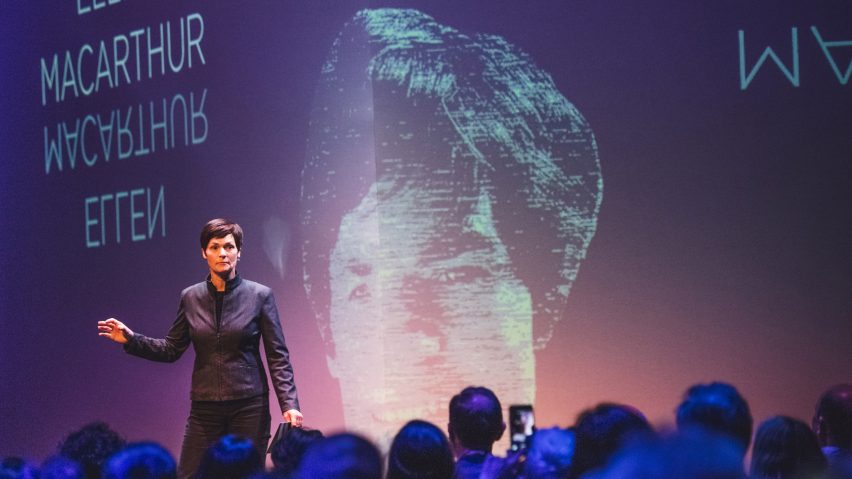
Ellen MacArthur's Circular Design Programme seeks 20 million designers to transform global economy
The Ellen MacArthur Foundation aims to make circular design "the new normal' by persuading 20 million designers to help transform the global economy from a linear to a circular model.
The non-profit organisation is launching an initiative called the Circular Design Programme, with the intention or persuading millions of designers to stop creating products that end up as landfill.
The foundation has calculated that by 2025 there will be 160 million designers and creative decision makers in the world, representing five per cent of the global workforce of 3.4 billion people.
"They will design everything around us by 2025, from the clothes we wear to the buildings we live and work in, to systems that deliver food and mobility," the foundation says in the executive summary of its Circular Design Programme, which has been shared exclusively with Dezeen.
"Our ambition is to engage these five per cent and make designing for the circular economy the new normal by 2025."
Designing for circular economy "one of the biggest creative challenges of our time"
The programme, which is still being developed, aims to persuade 20 million of these designers to adopt circular design in their work, and to make a further 60 million designers aware of circularity.
These numbers are based on tipping-point theory whereby, in order to drive systemic change, half of a given target audience needs to be open to new ideas while at least 10-20 per cent of the audience needs to adopt those ideas.

Designers are vital to ending today's linear economy, in which 80 per cent of all materials are wasted, the foundation believes.
"Today most [stuff] is designed for a linear model," says the Circular Design Programme's executive summary. "In industries such as fashion and plastics packaging, products and systems are designed such that upwards of 80 per cent of material flows are destined for landfill, incineration or even leakage into natural environments."
"Designing for a circular economy is one of the biggest creative challenges of our time. We need a new approach and an orchestrated global programme to support designers and creators."
Foundation encourages designers to adopt circular practices
Circular design follows the principles of the circular economy, which involves eradicating waste and pollution, reusing resources and enhancing natural systems.
The foundation aims to engage designers through a range of initiatives including sharing examples of successful circular design, hosting awards, events and exhibitions, and providing tools to help creatives adopt circular practices.
To help spread the message it has added a LinkedIn community, a #circulardesigners Instagram hashtag and a learning hub in addition to the Circular Design Guide it published in association with design studio IDEO.
The foundation arrived at the figure of 160 million worldwide designers by studying data from over 10 sources, including the World Bank, the OECD and the UK's Design Council.
It defines designers as someone who "creates with a clear intention, is focused on meeting user needs and applies design thinking mindsets and methods such as empathy, iterative approach etc." This includes people who design products, services and systems and "is regardless of their job title and formal education."
"Our mission is to accelerate the transition towards a circular economy"
The Ellen MacArthur Foundation was founded in 2009 by British former round-the-world sailor Ellen MacArthur, in order to help the global economy shift towards sustainable principles.
"Our mission at the Ellen MacArthur Foundation is to accelerate the transition towards a circular economy," said Simon Widmer, circular design lead at the foundation. "And when we look at the role of design, we see that designers play an absolutely essential role in that transition."
Having worked with sectors including the plastics industry and fashion, MacArthur launched her call for designers to engage with her mission in an interview with Dezeen in June this year.
"The design fraternity is absolutely a target for us, because designers build the world," she told Dezeen. "If you think about young people going through education today, if they want to be the designers of the future, what an amazing opportunity to be part of building a restorative, regenerative future; a future where we can recover materials and feed them back into the economy."
She added that her foundation's research showed that the circular model was potentially more profitable for businesses than the linear model.
"Every single time we've produced a report, it's been overwhelmingly positive," she said. "Linear is worth less than circular."
Main image is by Martin Allen.